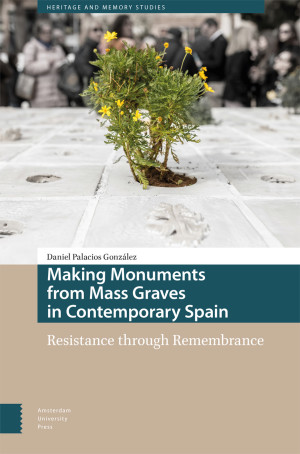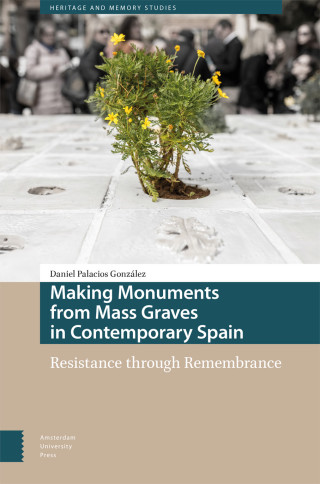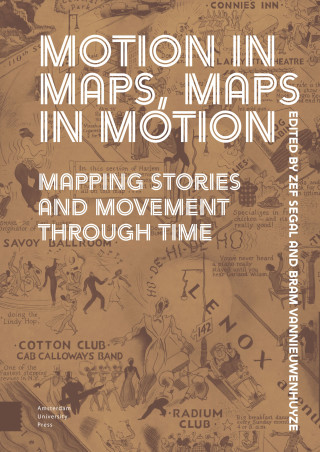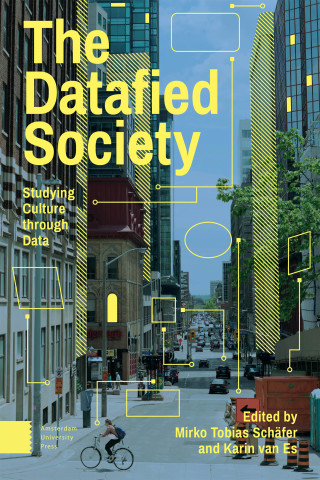

- Title
- Making Monuments from Mass Graves in Contemporary Spain
- Subtitle
- Resistance through Remembrance
- Author
- Daniel Palacios González
- Price
- € 107,99
- ISBN
- 9789048560141
- Format
- eBook PDF (Adobe DRM)
- Number of pages
- 186
- Language
- English
- Publication date
- 18 - 07 - 2024
- Dimensions
- 15.6 x 23.4 cm
- Partner

- Categories
- Contemporary History
- Contemporary Society
- War, Conflict and Genocide Studies
- Cultural Studies
- Heritage and Memory Studies
- Discipline
- History, Art History, and Archaeology
- Also available as
- Hardback - € 108,00
Introduction: Et in Arcadia Ego
Chapter One: From Violence to Resistance
A Place in Memory and a Mark on the Landscape
Remembering During the “War” that Began After the War
Mourning Rituals and Resistance
Chapter Two: Recovering Bodies and Places
Back to the Mass Graves in the Struggle for Democracy
Building Monuments on Mass Graves
Bones as a Requirement for Remembrance
Chapter Three: Forensic Turn and the Return to Monuments
Scientific Paradigms and Postmodern Discourses
Post-Exhumation Monument Practices
Returning to Monuments and Politics
Final Chapter: Mass Graves in Dispute
Bibliography
Methodological Appendix
Chapter One: From Violence to Resistance
A Place in Memory and a Mark on the Landscape
Remembering During the “War” that Began After the War
Mourning Rituals and Resistance
Chapter Two: Recovering Bodies and Places
Back to the Mass Graves in the Struggle for Democracy
Building Monuments on Mass Graves
Bones as a Requirement for Remembrance
Chapter Three: Forensic Turn and the Return to Monuments
Scientific Paradigms and Postmodern Discourses
Post-Exhumation Monument Practices
Returning to Monuments and Politics
Final Chapter: Mass Graves in Dispute
Bibliography
Methodological Appendix
Reviews and Features
“This text is a cutting-edge contribution to Spanish heritage and landscape and memory studies. It is a seminal contribution to the visual and material culture analysis of post-jus bello, i.e., postwar reparative and transitional justice. […] In the context of the current resurgence of proto-fascist and overtly fascist movements in Europe and elsewhere, this project will be a major contribution to the cultural history of Fascism and post-Fascism that is urgently needed today in European public culture.”
- Allen Feldman, New York University
- Allen Feldman, New York University
Daniel Palacios González
Making Monuments from Mass Graves in Contemporary Spain
Resistance through Remembrance
This book narrates how, beginning in 1936, bodies buried in mass graves during the Spanish War and subsequent dictatorship were turned into monuments. The book describes how the production of monuments evolved and what forms this process and these monuments took; it examines how the monuments were incorporated into society and used to influence public opinion; and it argues that this process was not simply based on the formal logic of tradition but instead reflected a conscious plan with a specific and rational end goal. As such, this book puts forward the idea that the monument as a material object became an expression of the historical consciousness of its producers, relating how different actors communicated their memories into meaningful gestures while limited by the material reality of integrating the bodies into a novel artefact. Finally, it contends that the people creating these monuments did not just bury their dead according to a funerary tradition but also sought to influence society.
Author
Daniel Palacios González
Daniel Palacios González is a Postdoctoral Researcher and Lecturer at the UNED, and previously, he was a Postdoctoral Research Fellow at Birkbeck, University of London. He got his PhD at the Universität zu Köln as an MSCA Fellow and is a member of the research project NECROPOL at the Universitat de Barcelona. His book De fosas comunes a lugares de memoria (CEPC, 2022) received the Memory Studies Association First Book Award 2023.




